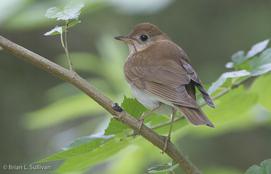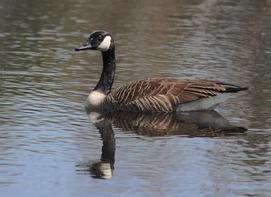VEERY, CANADA GOOSE, NORTHERN WATERTHRUSH MT-287
Big Hole National Battlefield, Wisdom, Montana
June 6, 8:53 a.m.
Sunrise at 5:45 a.m.
How fine to savor the songs of a veery far west from where they were last heard in the eastern forests. Inevitably, I listen for patterns in his singing, wondering how he's putting this performance together. My ears fail me, however, and soon I'm inspecting sonagrams in Raven-lite software. Ah, I see that he has four different songs, and during the first minute he sings them in the following sequence: A B C D A B C B D A B D A B C. Nothing regular in that sequence, it seems, though a longer sequence would no doubt tell us more about how he puts his thoughts together.
Canada geese make a racket as they fly by, seeming to stop the veery's singing and instead put him into calling mode, with a strong, down-slurred veeer call note given first at 1:22.
Then a northern waterthrush, who had been in the background, fills the void, offering four strong songs from 1:37 to the end.
Hear those wing beats of the goose at 1:30? Three beats in 0.6 seconds, as I measure on my computer monitor, calculates to five wing beats per second, far slower than the 40-50 beats of the broad-tailed hummingbird wings I've been listening to.
Background
Yellow warbler, northern waterthrush, Canada geese (a flyby at 1:25), song sparrow, and the rippling North Fork of the Big Hole River. Very nice water sounds!

Photo by Brian L. Sullivan

Photo by John Van de Graaff
